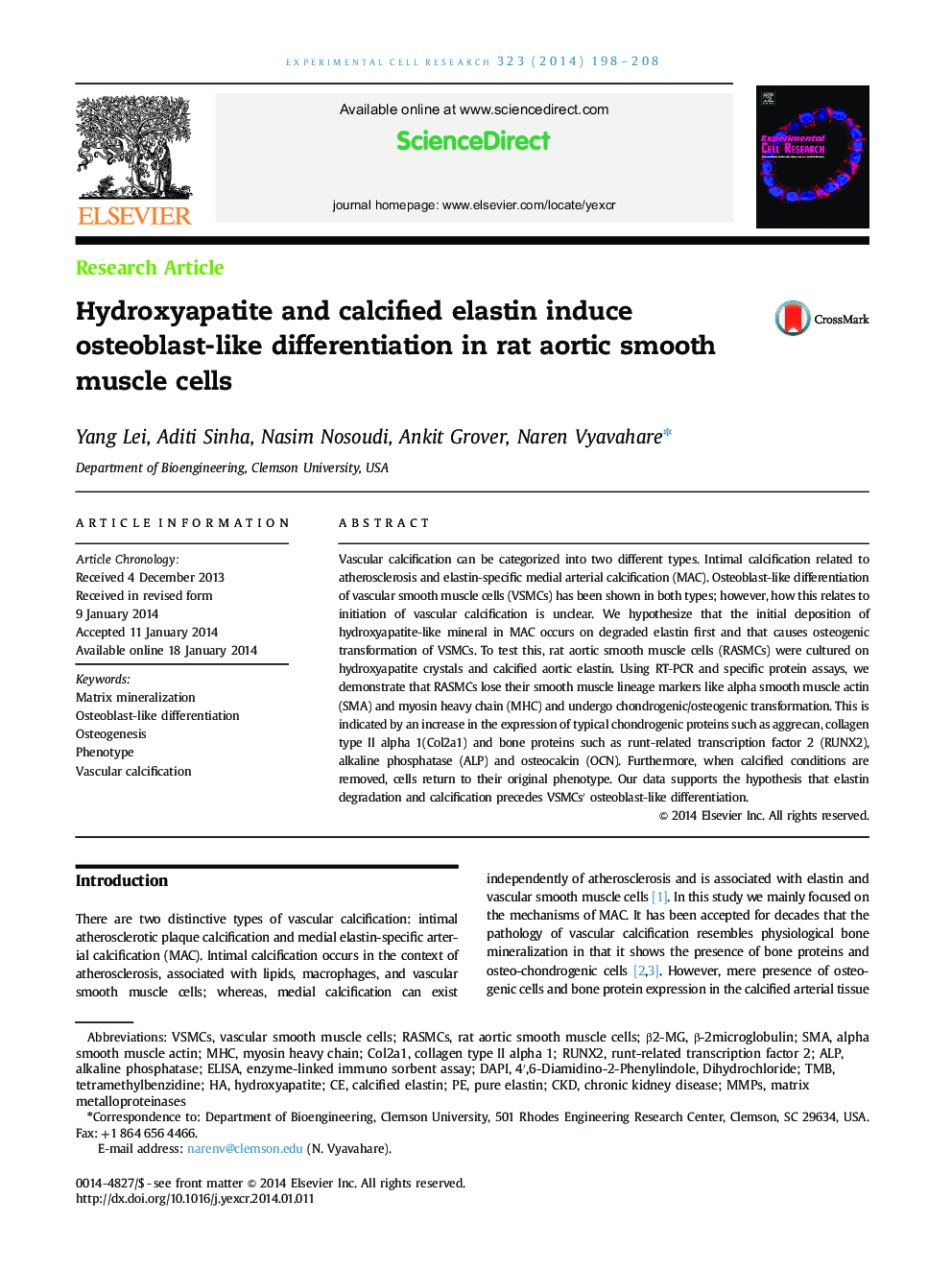| Article ID | Journal | Published Year | Pages | File Type |
|---|---|---|---|---|
| 10904043 | Experimental Cell Research | 2014 | 11 Pages |
Abstract
Vascular calcification can be categorized into two different types. Intimal calcification related to atherosclerosis and elastin-specific medial arterial calcification (MAC). Osteoblast-like differentiation of vascular smooth muscle cells (VSMCs) has been shown in both types; however, how this relates to initiation of vascular calcification is unclear. We hypothesize that the initial deposition of hydroxyapatite-like mineral in MAC occurs on degraded elastin first and that causes osteogenic transformation of VSMCs. To test this, rat aortic smooth muscle cells (RASMCs) were cultured on hydroxyapatite crystals and calcified aortic elastin. Using RT-PCR and specific protein assays, we demonstrate that RASMCs lose their smooth muscle lineage markers like alpha smooth muscle actin (SMA) and myosin heavy chain (MHC) and undergo chondrogenic/osteogenic transformation. This is indicated by an increase in the expression of typical chondrogenic proteins such as aggrecan, collagen type II alpha 1(Col2a1) and bone proteins such as runt-related transcription factor 2 (RUNX2), alkaline phosphatase (ALP) and osteocalcin (OCN). Furthermore, when calcified conditions are removed, cells return to their original phenotype. Our data supports the hypothesis that elastin degradation and calcification precedes VSMCsâ² osteoblast-like differentiation.
Keywords
RASMCsMmpsCol2a1VSMCsRUNX2DAPITMB4′,6-diamidino-2-phenylindole, dihydrochloridealpha smooth muscle actinALPAlkaline phosphataseenzyme-linked immuno sorbent assayOsteogenesischronic kidney diseasetetramethylbenzidineELISASMAMyosin heavy chainRat aortic smooth muscle cellsVascular smooth muscle cellsRunt-related transcription factor 2PhenotypeMatrix metalloproteinasesMHCCKDHydroxyapatiteMatrix mineralizationVascular calcification
Related Topics
Life Sciences
Biochemistry, Genetics and Molecular Biology
Cancer Research
Authors
Yang Lei, Aditi Sinha, Nasim Nosoudi, Ankit Grover, Naren Vyavahare,
